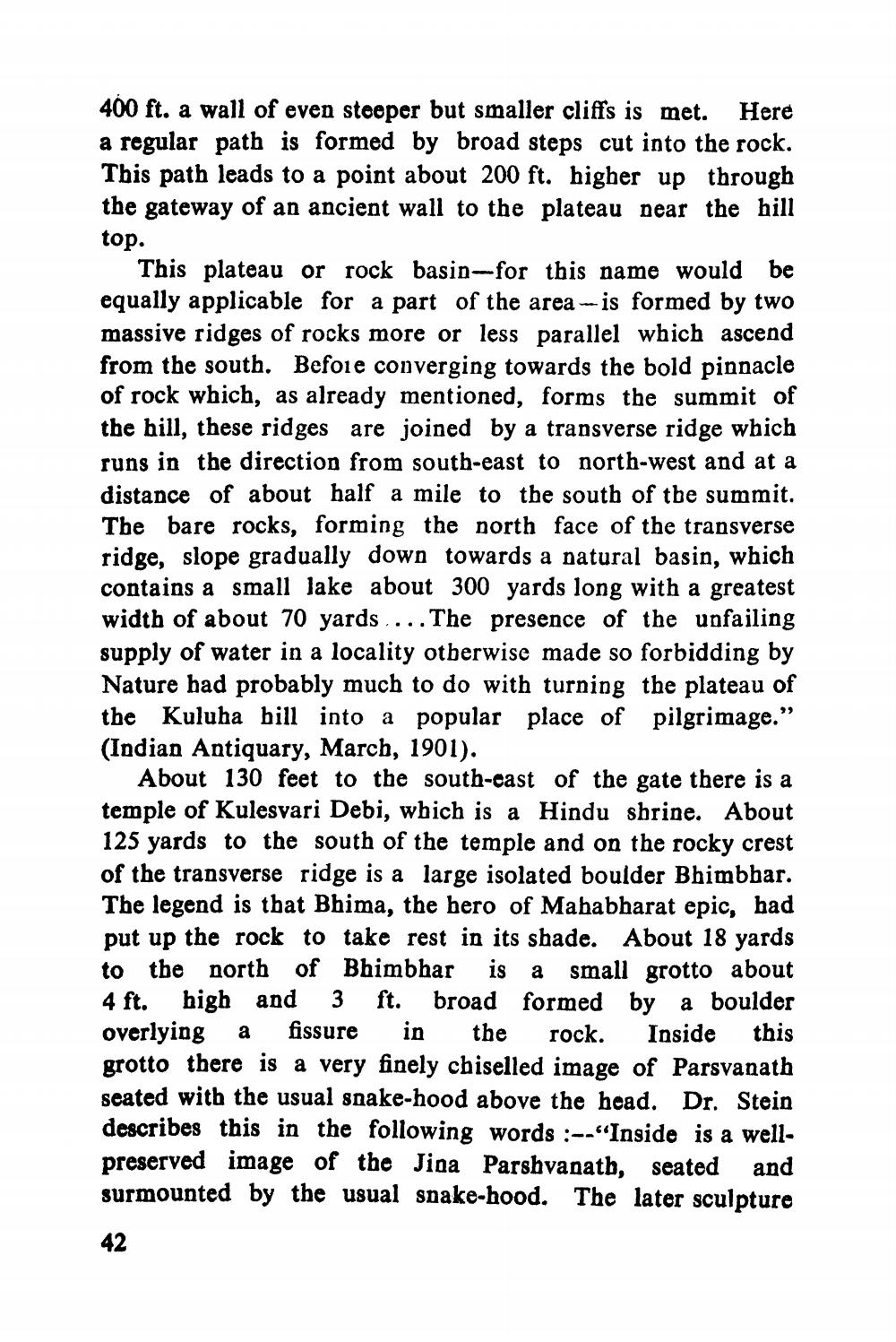________________
400 ft. a wall of even steeper but smaller cliffs is met. Here a regular path is formed by broad steps cut into the rock. This path leads to a point about 200 ft. higher up through the gateway of an ancient wall to the plateau near the hill top.
This plateau or rock basin--for this name would be equally applicable for a part of the area - is formed by two massive ridges of rocks more or less parallel which ascend from the south. Befoie converging towards the bold pinnacle of rock which, as already mentioned, forms the summit of the hill, these ridges are joined by a transverse ridge which runs in the direction from south-east to north-west and at a distance of about half a mile to the south of the summit. The bare rocks, forming the north face of the transverse ridge, slope gradually down towards a natural basin, which contains a small lake about 300 yards long with a greatest width of about 70 yards ... The presence of the unfailing supply of water in a locality otberwise made so forbidding by Nature had probably much to do with turning the plateau of the Kuluha bill into a popular place of pilgrimage.” (Indian Antiquary, March, 1901).
About 130 feet to the south-cast of the gate there is a temple of Kulesvari Debi, wbich is a Hindu shrine. About 125 yards to the south of the temple and on the rocky crest of the transverse ridge is a large isolated boulder Bhimbbar. The legend is that Bhima, the hero of Mahabharat epic, had put up the rock to take rest in its shade. About 18 yards to the north of Bhimbhar is a small grotto about 4 ft. high and 3 ft. broad formed by a boulder overlying a fissure in the rock. Inside this grotto there is a very finely chiselled image of Parsvanath seated with the usual snake-hood above the head. Dr. Stein describes this in the following words :--"Inside is a wellpreserved image of the Jina Parshvanath, seated and surmounted by the usual snake-hood. The later sculpture




